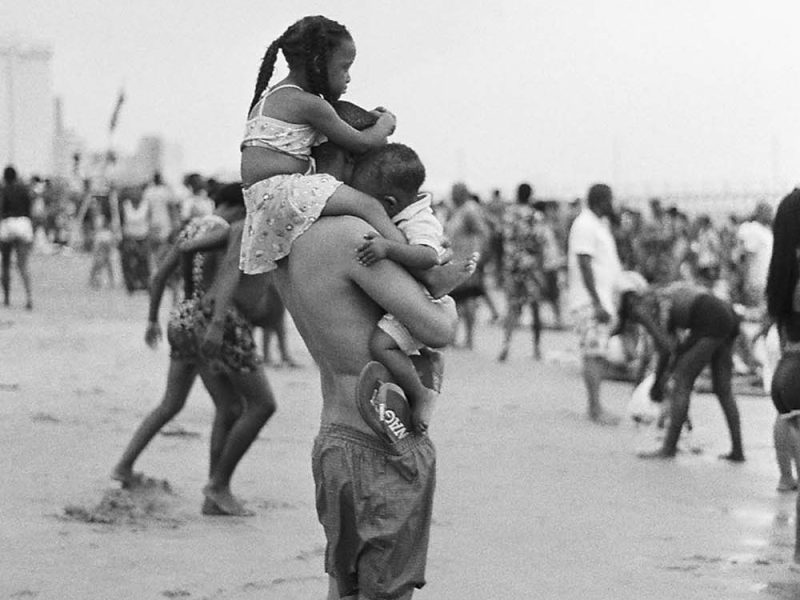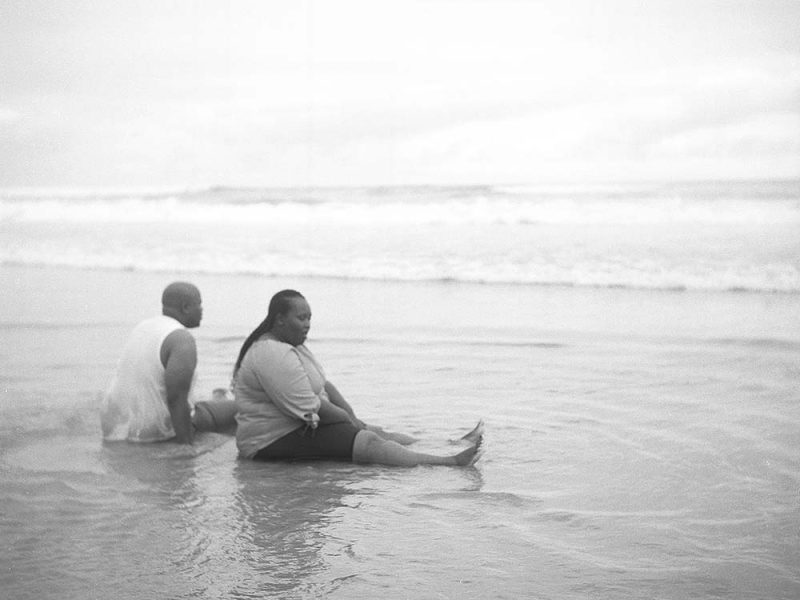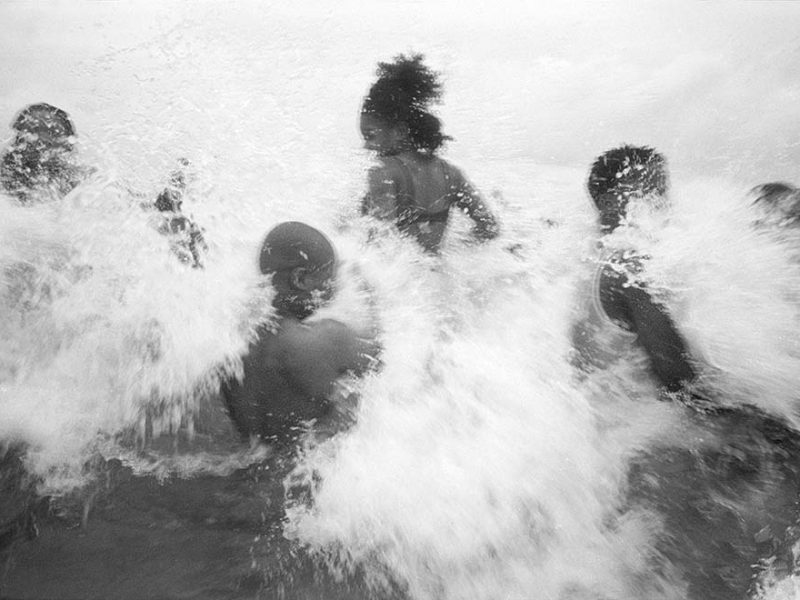Luvuyo Equiano Nyawose
Artist Statement
eBhish’ – an investigation of Black life and Black leisure ebhish’ laseThekwini The legacies of colonialism and apartheid echo in many forms of social practice in contemporary South Africa. Ibhish’ laseThekwini (formerly the Durban beachfront), a seaside public space, is imbued with a racialized tension. Historically, the beach was the nation’s premier seaside destination and drew crowds of white beachgoers. The beach culture was established and sustained through visualisation, particularly popular culture and media, which exclusively catered for white people. The beach pictorial archives, housed at the Old Court House Museum eThekwini, reflect this bias by depicting predominately white beachgoers throughout the beach’s history. Since the 1990s, the crowds have changed, making the central beaches predominantly Black, particularly in the summer. eBhish’ is an intervention on the archive. Through film photography, I have been documenting Black beachgoers to re-read, re-question and re-inscribe Black leisure into the archive. The notion of the ocean as witness is a key research interest. We might think of the ocean as a subject which holds memory. This is particularly important in my work, as it looks at the self in relation to the ocean, and engages with the beach as a meeting point of Black people in summer and as an articulation of an unnameable space (a metaphysical realm) beyond the constraints of capitalist leisure crucial for spiritual survival. This understanding is further reinforced by various nguni aquatic myths around the water and the ocean which have contributed to the continued racialisation of the space (Black essential and white essential). In my work, I unpack the concept of amphibious history, and liquid archives, document Black life at the beach, and research the historical articulations of being at the beach for leisure.
Bio
Luvuyo Equiano Nyawose is an artist, curator, filmmaker and researcher. His current work and research unpack notions of intimacy, public communion, and Black Oceanic Humanities of the Indian Ocean. Nyawose is interested in developing and cultivating research and artistic methodologies around Black cultural production in Africa and its diaspora. He is currently pursuing his PhD in Modern Culture and Media at Brown University. Nyawose is a 2022 Foam Paul Huf Nominee, recent exhibitions include: the 13th edition of the Recontres de Bamako – Biennale Africaine de la Photographie (October 2022), Indigo Waves and Other Stories – Zeitz MOCAA (June 2022 – January 2023), PHOTO 2022 International Festival of Photography (April – May 2022), KZNSA Gallery solo exhibition (January 2022), blank projects solo exhibition (July 2021).
◆◆◆
審査員特別賞 – ルブヨ・エキアーノ・ニャウォセ
場所がその歴史の中で固有に培ってきた記憶と、人間の営みが交差して立ち現れる土地の性格や特有の雰囲気のことをゲニウス・ロキ、日本語では地霊(Chirei)という。地霊は、その場所の地図や都市計画にも影響を与えるし、人々のふるまいをも変える。しかし目には見えない。つまり、シャッターを切っても容易には写るものではないのである。そして矛盾するようなことを言うが、その目に見えない地霊を見せることができるのが写真というメディアである。
多くの写真家が、常に変化する生き物のような都市に被写体として魅了されてきたのは、この得体の知れないものの存在ゆえだろう。だが、ポストカードにあるような風光明媚な景色を写すのとは違い、地霊は、綿密なリサーチと観察(撮影)、そして写真家の態度と言葉を伴って作品となり、ようやく写るのだと思う。ルブヨ・エキアーノ・ニャウォセの「eBhish’」はまさにその地霊を写した作品である。
この作品がユニークなのは、ニャウォセがそのステートメントにおいて目撃者としての海という概念を示している点だ。カメラと海が、ビーチで起きていることを同時に見つめているのはとても興味深い。この時、海は過去からの時間を伴った光景を見つめており、カメラはその時その場所を見ている。南アフリカ・ダーバンのビーチ。ここはアパルトヘイトの歴史を経た海辺であり、かつては白人の海水浴客しかいなかったという
今、ニャウォセの写真に写る人々は、祝福された夏のひとときを過ごす。浜辺に座って豊かな水を楽しみながらながらおしゃべりにこうじたり、誰かと出会ったりする。多幸感に満ちた光景を並べながら、同時に観るものにその場所の歴史に思いを馳せることを促すことに成功しているのは、カラーではなくモノクロを選んだからかもしれない。DurbanのBlack Cultureをリサーチしドキュメントしながら、芸術的方法論でアプローチすることで、ニャウォセの目論見は的確に達成されている。
– 高橋 朗 HARIBAN AWARD 2022 審査員
【略歴】
アーティスト、キュレーター、映画制作者、研究者。近年の作品と研究テーマは、親密さ、公共の交わり、インド洋のブラック・オーシャン・ヒューマニティーという概念を追求することにある。ニャウォセは、アフリカとそのディアスポラにおける黒人文化生産に関する研究と芸術的方法論の開発と育成に関心を寄せている。現在、ブラウン大学で現代文化およびメディアの博士過程に在籍中。ニャウォセは2022年のFoam Paul Hufにノミネートされており、最近の展覧会には、「第13回 Recontres de Bamako – Biennale Africaine de la Photographie」(2022)、「Indigo Waves and Other Stories – Zeitz MOCAA」(2022)、「PHOTO 2022国際写真フェスティバル」(2022)、「KZNSA Gallery」(2022)、「blank projects」(2021)等がある。
Jurors Choice Award| Selected by Sayaka Takahashi
Series Title
eBhish’
Category
Hariban Award 2022



